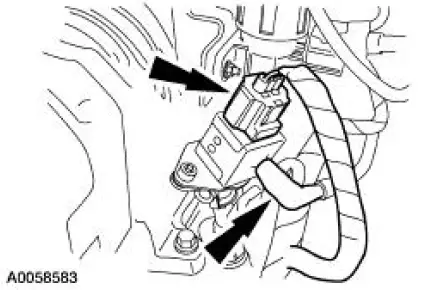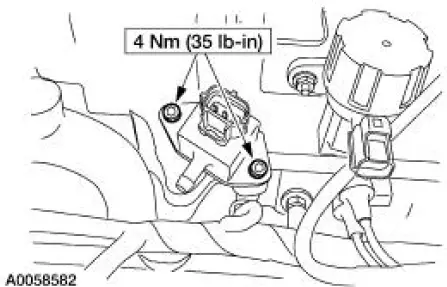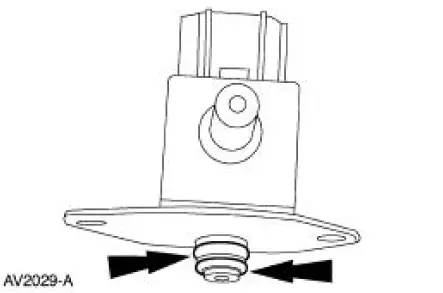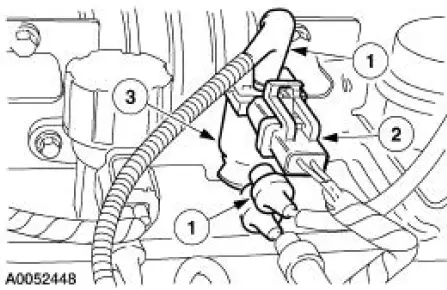Ford Mustang (1999-2004) Service Manual: Fuel Pressure Sensor
Material
| Item | Specification |
| Super Premium SAE 5W-20 Motor Oil XO-5W20-DSP or equivalent | WSS-M2C914- A |
Removal
WARNING: Do not smoke or carry lighted tobacco or open flame of any type when working on or near any fuel related components. Highly flammable mixtures are always present and may be ignited. Failure to follow these instructions may result in personal injury.
WARNING: Fuel in the fuel system remains under high pressure even when the engine is not running. Before working on or disconnecting any of the fuel lines or fuel system components, the fuel system pressure must be relieved. Failure to follow these instructions may result in personal injury.
Mach I
1. Remove the air intake scoop. For additional information, refer to Section.
All engines
2. Relieve the fuel pressure. For additional information, refer to Section.
3. NOTE: The 4.6L (4V) Cobra engine is shown, the other engines are similar.
Disconnect the connector and the vacuum line.

4. Remove the bolts and the sensor.

Installation
1. Inspect the O-rings, and install new O-rings if necessary.

2. NOTE: Lubricate the new O-rings with clean engine oil to aid installation.
To install, reverse the removal procedure.
Supercharger Bypass Vacuum Solenoid
Removal and Installation
1. Remove the supercharger bypass vacuum solenoid.
1. Disconnect the vacuum hoses.
2. Disconnect the electrical connector.
3. Unclip the supercharger bypass vacuum solenoid from the vacuum accessory bracket.

2. To install, reverse the removal procedure.
 Clutch Pedal Position (CPP) Switch
Clutch Pedal Position (CPP) Switch
Removal
1. Disconnect the battery ground cable. For additional information,
refer to Section.
2. Disconnect the connector.
3. Remove the bolt and the clutch pedal position (CPP) switch.
In ...
Other materials:
Engine (Diagnosis and Testing)
Special Tool(s)
Commercially Available
Leakdown Tester
Quick Disconnect Compression
Tester
134-R0212 or equivalent
Dial Indicator Gauge Adapter
303-007 (TOOL-6565-AB) or
equivalent
Dial Indicator Gauge with
Holdin ...
Opening the convertible top
Note: Do not store articles behind rear seat. Articles stored in the
convertible top stowage compartment may break the rear glass window
when the top is opened.
Note: Opening the convertible top when the top material is wet may
cause mold or mildew.
The conv ...
Assembly
All steering gears
1. Install the steering gear in the special tools.
Steering gears equipped with travel restrictors
2. Install the travel restrictors.
Install new travel restrictors as necessary.
All steering gears
3. CAUTION: Place the steering gear at t ...

